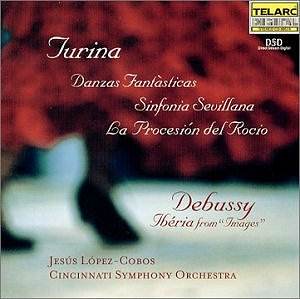 Composer: Henri Dutilleux
Composer: Henri Dutilleux
Works: Métaboles, The Shadows of Time, Symphony No. 2 ‘Le Double’
Performers: Toulouse Capitole Orchestra, Michel Plasson, Timothée Collardot, Aude Guirai, Sarah Lecolle (children’s voices)
Recording: Recorded in the Halle-aux-Grains, Toulouse on January 3rd-6th, 2001, and June 28th-30th, 1998. DDD
Label: EMI CDC5 57143-2
Henri Dutilleux, one of the luminaries of the 20th-century French music scene, is celebrated for his intricate orchestral textures and profound emotional depth. This new release from EMI, featuring the Toulouse Capitole Orchestra under Michel Plasson, presents a compelling survey of Dutilleux’s oeuvre, encapsulating both his hallmark style and the vibrant color palette that has defined his work. The selections—Métaboles, The Shadows of Time, and Symphony No. 2 ‘Le Double’—collectively offer a rich auditory tapestry that reflects the composer’s evolution and enduring relevance.
The performance is marked by an impressive commitment from the Toulouse orchestra, whose execution of Dutilleux’s complex orchestrations showcases not only technical precision but also an intuitive grasp of the emotional undercurrents that run through each piece. Plasson’s interpretation reveals a deep understanding of Dutilleux’s musical language, navigating the intricate interplay of color and rhythm with finesse. The opening movement of Métaboles, ‘Incantatoire,’ illustrates this beautifully—its parallel instrumental lines invoke a sense of mystery and anticipation, reminiscent of Messiaen’s ethereal quality while retaining a distinctly Stravinskian vigor. The orchestra’s woodwinds, described by Dutilleux himself as ‘steel blue,’ emerge with a brilliant clarity, underscoring the composer’s obsession with coloristic nuance.
Recorded by a skilled engineering team, the sound quality is exceptional, providing a clear perspective that allows the listener to appreciate the dynamic contrasts within the orchestral fabric. The nuanced textures of ‘Vagues de lumière’ from The Shadows of Time are particularly striking; the glissando strings create a shimmering surface that evokes the fluidity of water, a hallmark of Dutilleux’s sound world. The recording captures these moments with a fidelity that invites repeated listening, revealing new layers and details with each encounter.
Dutilleux’s Symphony No. 2, composed for the Boston Symphony Orchestra’s seventy-fifth anniversary, is a tour de force that deftly balances complexity and clarity. The final movement, while initially appearing to veer into unexpected Hollywood-esque territory, ultimately circles back to the composer’s signature Stravinskian sonorities, culminating in a hypnotic closure that resonates long after the last notes fade. Here, Plasson’s deep connection to the material shines through, as he navigates the symphony’s intricate structure with a sure touch, ensuring that the listener remains engaged throughout its labyrinthine passages.
The inclusion of The Shadows of Time expands the thematic scope of the recording, exploring the concept of time with a depth that is both contemplative and poignant. The children’s voices, woven into the orchestral fabric, serve as a reminder of innocence amidst the complexity of adult experiences. Dutilleux’s ability to create a cohesive whole from such diverse elements speaks to his mastery of orchestration and thematic development.
This release is a vital addition to the discography of Dutilleux’s works, standing alongside notable interpretations by Yan-Pascal Tortelier and Mstislav Rostropovich. While alternatives exist, the Toulouse performance offers a unique blend of emotional depth and technical prowess, making it a compelling choice for both seasoned listeners and newcomers to Dutilleux’s music. The intermingling of orchestral colors, the clarity of the recording, and the interpretative insight of Plasson and his orchestra coalesce into a significant contribution to the contemporary classical repertoire. This album not only reaffirms Dutilleux’s stature as a composer but also resonates with the listener on both intellectual and emotional levels, ensuring its place in the canon of great 20th-century orchestral music.



